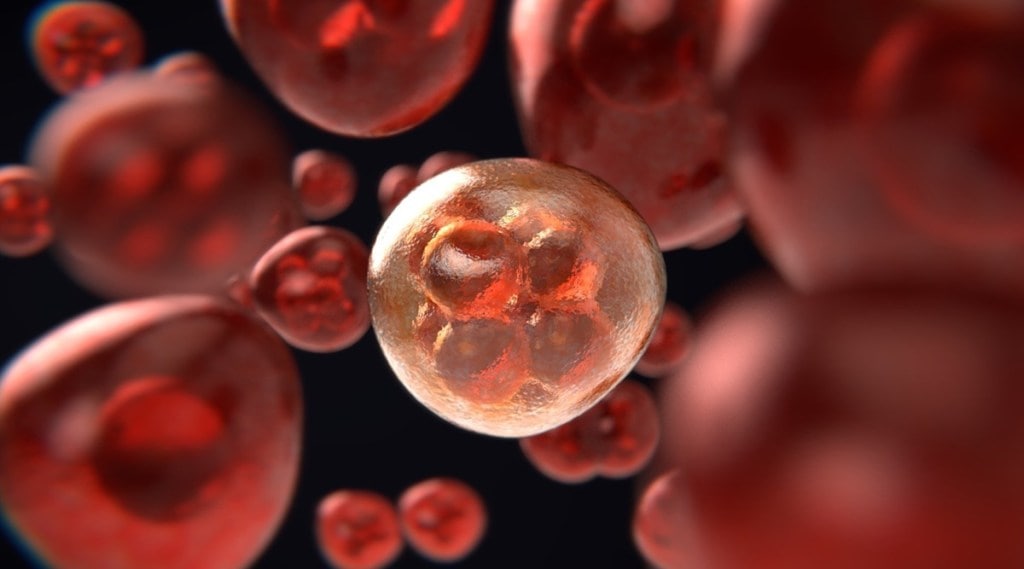As the incidence of lymphoma continues to rise steadily in India, the need for advanced treatment options has become increasingly urgent. According to doctors, lymphoma is the most common type of blood cancer.
Diffuse Large B-Cell Lymphoma (DLBCL), the most aggressive form of non-Hodgkin lymphoma (NHL), alone accounts for around 25,000 new cases annually in the country. Despite existing treatments, nearly 40 percent of DLBCL patients face relapse or disease progression, creating significant challenges for patients, their families, and the healthcare system.
Everything you need to know about Diffuse Large B-Cell Lymphoma (DLBCL)
Diffuse Large B-Cell Lymphoma (DLBCL) is an aggressive, hard-to-treat disease and is the most common form of NHL in the United States. DLBCL grows rapidly in the lymph nodes and frequently involves the spleen, liver, bone marrow or other organs. Although the disease can affect people of any age, it most commonly occurs in older adults, and the median age at the time of diagnosis is 66.8. Approximately 150,000 people worldwide are estimated to be diagnosed with DLBCL each year. In the U.S. approximately 31,000 people are projected to be diagnosed with DLBCL in 2023.
The most common 1L treatment for DLBCL is R-CHOP. This regimen became the SOC for newly diagnosed DLBCL nearly 20 years ago. While many patients are responsive to initial treatment, four in ten people do not respond to initial treatment or relapse. For people who undergo initial treatment with the SOC, R-CHOP, most relapses occur within two years of starting treatment, and the majority of those who require subsequent lines of therapy have poor outcomes.
Limited progress has been made in improving patient outcomes in previously untreated DLBCL over the last two decades. Researchers have tried to improve the effectiveness of R-CHOP by adding different medicines, but these combinations proved less effective or less safe than the SOC.
However, there is renewed hope as the first FDA-approved therapy for first-line treatment of DLBCL in almost 20 years is now available in India. This breakthrough marks a pivotal milestone in the fight against DLBCL, offering patients access to cutting-edge care and the potential for improved outcomes. Doctors maintain that new treatment regimen, Polatuzumab, reduces the chance of the disease getting worse, relapse, or causing death by 27 percent compared to the current treatment option. Studies suggest that 77 percent of patients who got the new treatment had no worsening of their disease after two years.
“One of the key challenges in treating DLBCL is misdiagnosis and delayed referrals from general physicians, which can disrupt the patient’s treatment journey and compromise effectiveness. Since the symptoms of DLBCL can be non-specific, they are sometimes mistaken for more common infections like tuberculosis, leading to delays in proper diagnosis. Early and accurate diagnosis, followed by timely initiation of advanced treatment options like Polatuzumab can significantly improve outcomes, leading to complete remission and reduced mortality rates,” Dr Sajjan Rajpurohit , Senior Director, BLK-Max Super Speciality Hospital said during a recent press briefing.
What is Polatuzumab?
For the first time in nearly two decades, there has been a groundbreaking advancement in DLBCL treatment with Polatuzumab in combination with chemotherapy. This is the first FDA-approved therapy in nearly 20 years for the first-line treatment of DLBCL, a hard-to-treat disease and the most common form of NHL. Polatuzumab is a first-in-class anti-CD79b antibody-drug conjugate (ADC).
Data from Polatuzunab trial data indicates a significant reduction of 27% in risk of progression-free survival, disease progression, relapse or death compared to the existing standard-of-care of MabThera/Rituxan plus cyclophosphamide, doxorubicin, vincristine and prednisone (R-CHOP)
Since the adoption of chemotherapy in 2002, approximately 11 clinical trials have failed to demonstrate improved clinical outcomes for DLBCL. Polatuzumab’s success is a remarkable breakthrough, doctors maintain.
Globally, over 23,000 patients have been treated in the first-line setting, and the drug is now approved in more than 90 countries, underscoring its worldwide impact.
Polatuzumab in combination with chemotherapy is now also a preferred regimen for first line treatment of DLBCL treatment under National Comprehensive Cancer Network (NCCN) Clinical Practice Guidelines in Oncology.
How does Polatuzumab work?
Polivy is a first-in-class anti-CD79b antibody-drug conjugate (ADC). The CD79b protein is expressed specifically in the majority of B-cells, an immune cell impacted in some types of NHL. Polivy is designed to bind to CD79b on B-cells and destroys them through the delivery of an anti-cancer agent, which is thought to minimise the effects on normal cells.
Polivy in combination with R-CHP is the first new treatment regimen in more than two decades to significantly improve outcomes in people with previously untreated DLBCL compared to the SOC.
What are the current treatment challenges?
While DLBCL is a highly treatable and potentially curable form of blood cancer, mortality remains concerning, particularly in patients with returning disease (relapse/refractory).
In India, nearly 30-40 percent of people diagnosed with DLBCL do not survive for five years, which is worse than the global average. A significant issue in the treatment pathway is misdiagnosis and delayed referrals by general physicians, which often result in compromised treatment efficacy.
“In cases of Diffuse Large B-Cell Lymphoma (DLBCL), 40% of patients relapse or progress after first line therapy. Hence there is need for newer and better therapies in the first line. to improve outcomes. By adopting innovative therapies like polatuzumab as the new standard of care (SoC) in first line treatment, we can increase their chances of cure, while also easing the financial and emotional burden that comes with relapse or disease progression. This shift would be crucial in improving both survival rates and quality of life for DLBCL patients in India,” Dr Pawan Singh, Director-Hematology, Yatharth Super Speciality Hospital said.
Limited progress has been made in improving patient outcomes in previously untreated DLBCL over the last two decades. While many patients are responsive to initial treatment, as many as four in ten people do not respond to initial treatment or relapse within two years after initial treatment. These patients face limited treatment options, which adds to the emotional and psychological toll on them and their families, who live in constant fear of the disease returning.
‘Polatuzumab offers new hope for patients’
The best chance of preventing relapse in people with DLBCL is with effective and tolerable therapy at the time they are first diagnosed and have received no prior treatment. When subsequent therapy is needed, the course of the disease tends to have worse outcomes.
According to doctors, Polatuzumab, an antibody-drug conjugate (ADC), offers hope for such patients by targeting specific proteins in lymphoma cells and delivering cytotoxic agents directly to the cancer cell, doctors maintain.
“First-line treatment for DLBCL presents the best opportunity for a successful outcome. Most relapses occur within the first 24 months of starting treatment, but patients who don’t progress during this period have better survival rates. Hence It is crucial to offer the most effective treatment option in the first-line setting to reduce the risk of disease progression and increase the chances of a curative outcome,” Dr Sushant Mittal, Director Medical Oncology, Action Cancer Hospital pointed out.
Clinical data shows a 27 percent reduction in the risk of progression, relapse or death in patients treated with Polatuzumab in the first line. Furthermore, 77 percent of patients treated with this therapy were progression-free for two years, providing a lifeline to those who previously had limited options.








